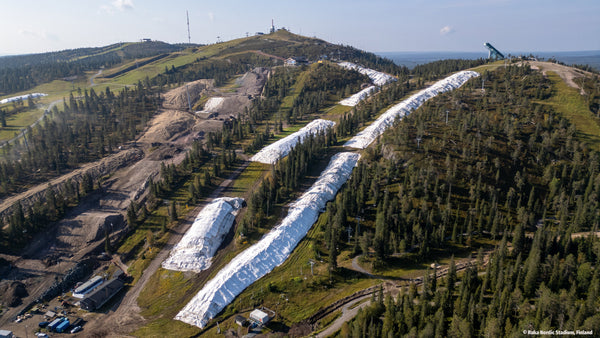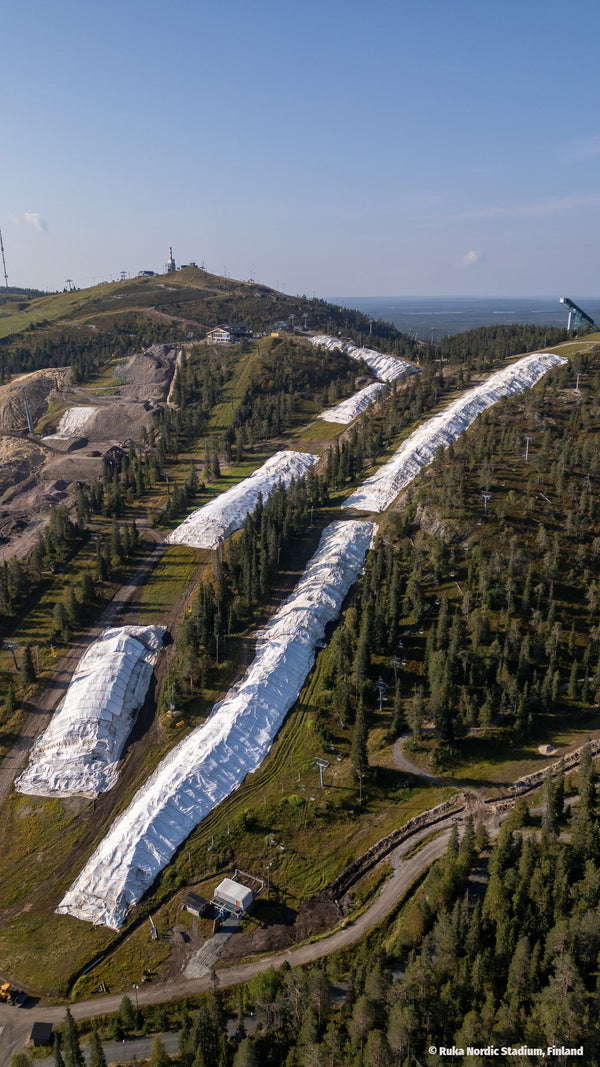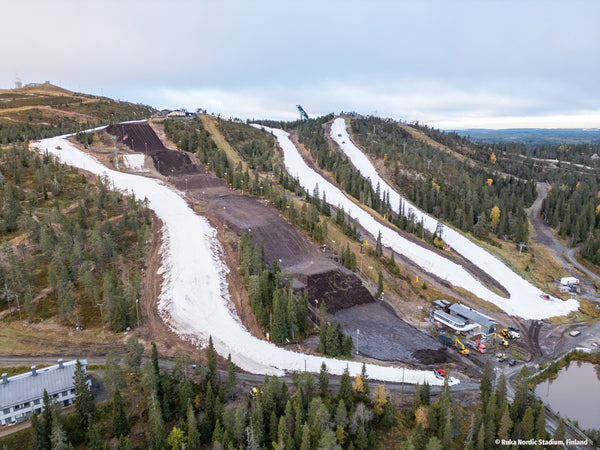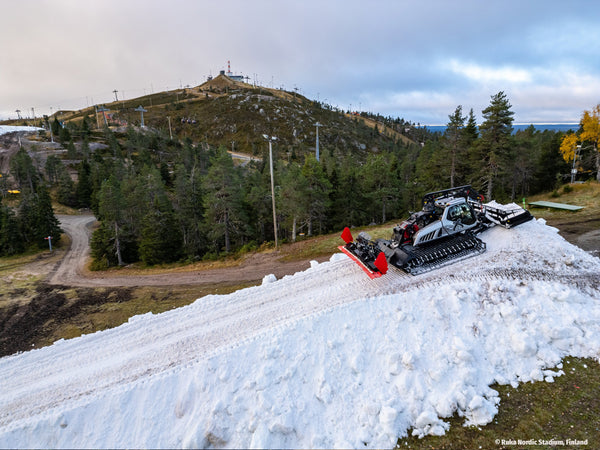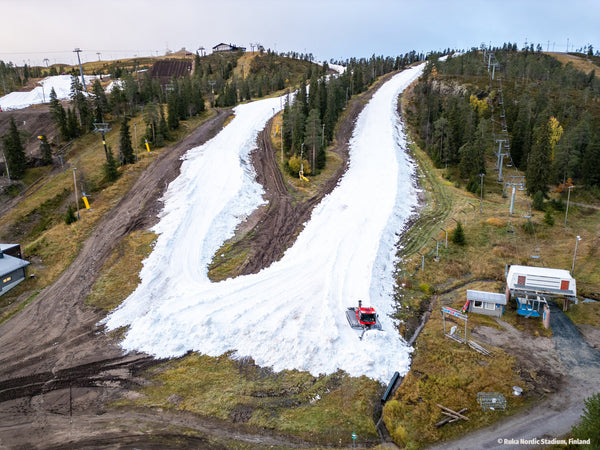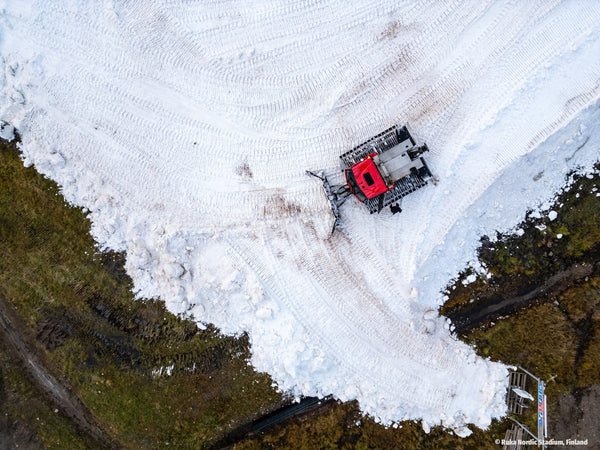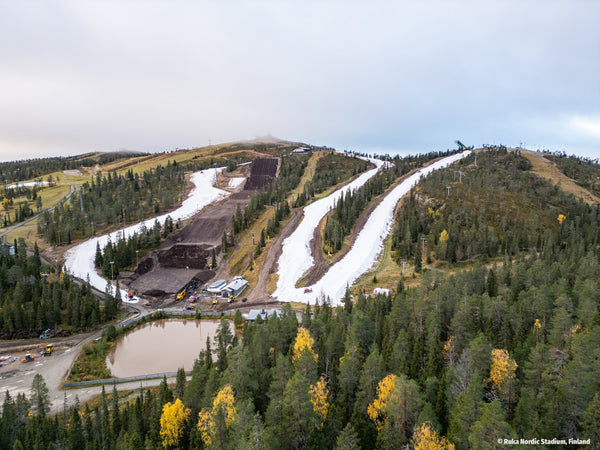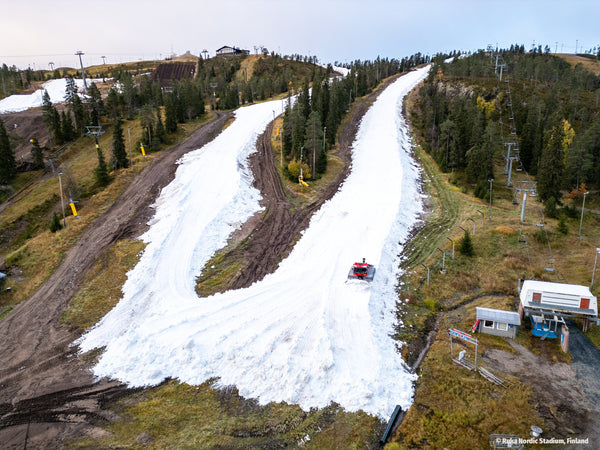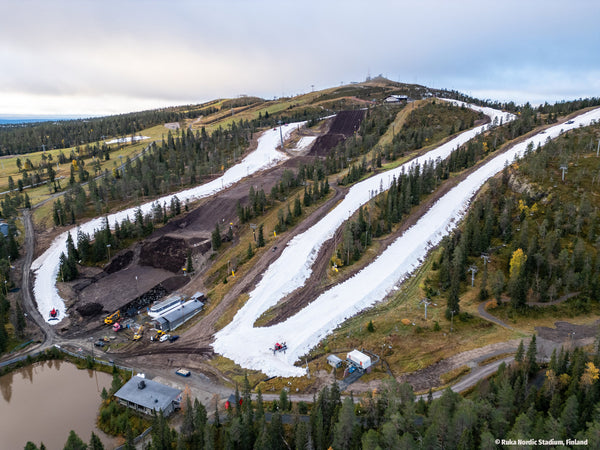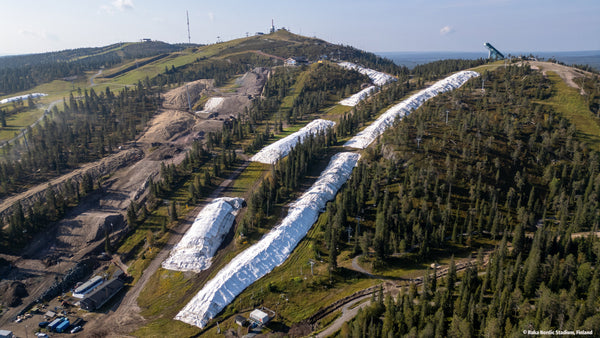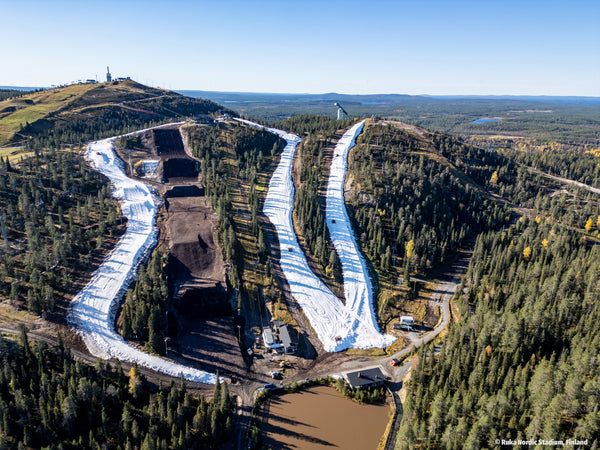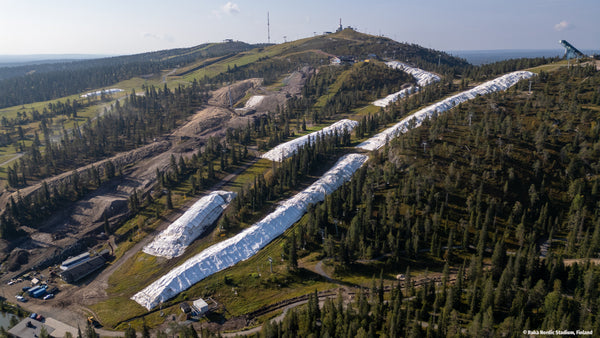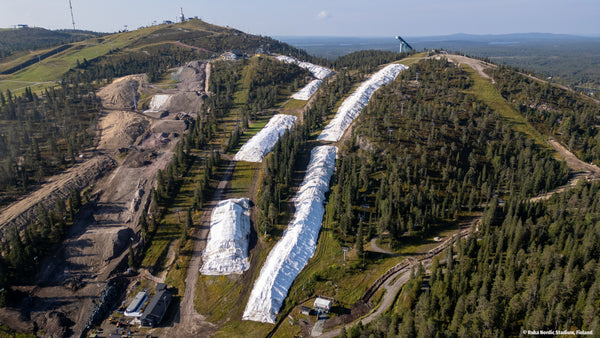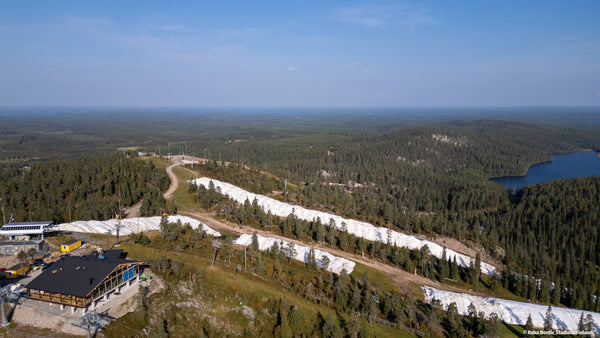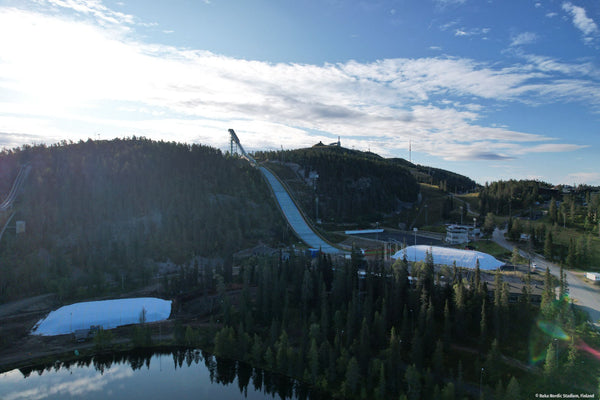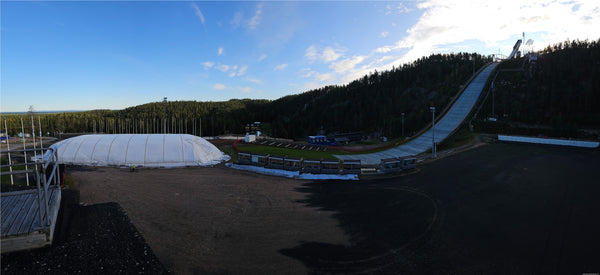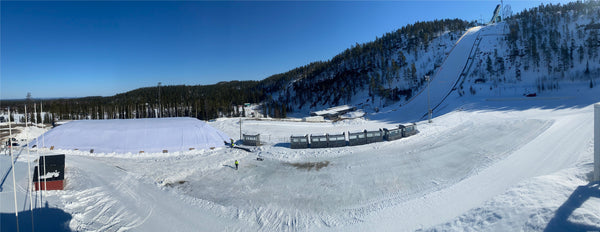Ruka’s snow-how brings winter to the coordinates of snow
Ruka is one of Europe’s most snow-sure ski resorts. Due to first-class snow-how, efficient snowmaking equipment, and storing snow over summer, you can ski over 200 days from October to May in Ruka.
Storing snow, or snow farming as it’s also called, is a year-round process. During the cold winter months (December–January), we create several meters of snow on the ski slopes using snow cannons. We aim to be as energy-efficient as possible, so we choose the optimal weather conditions for snow-making and utilize renewable energy.
Then in May, when the slopes are closed, the massive amounts of snow are collected and piled into large mounds at Saarua’s ski area. These several-meter-high snow piles are stored over the summer under insulation materials that prevent melting.
When the snow is dug up from under the tarps in the beginning October, it is spread on the slopes in three shifts around the clock. We use PistenBully’s SNOWSAT system, which shows the thickness of the snow with centimeter precision in real time, to assist the drivers. This system helps ensure an even distribution and leveling of the snow. While some snow does melt during the summer, we typically have about 200,000 square meters of stored snow available for the season opening. This allows us to open several slopes, including Ruka Snow Park.
Stored snow slope is the result of collaboration between high-end technique and skilled people
Snow storage experiments at Ruka began in the late 1990s, reportedly as the first in the world. At the same time, the University of Innsbruck started researching the covering of glaciers to slow down melting. At Ruka, the first stored snow for the early-season ski track was used during the 2002-2003 season near the ski stadium.
The new method of preserving snow over the summer was tested for the first time in the summer of 2016. During the winter, a several-meter-thick layer of snow was made with snow cannons on slope 13 of Saarua, which was then piled into three large heaps in the spring. The snow piles were covered with white fabric and partly with sawdust. The preserved snow created a snow layer about 20 meters wide and half a meter thick across the entire slope. The technique proved to be effective and worth further development. Over the years, we have refined our snow storage expertise, and in spring 2024, around 200,000 cubic meters of snow were stored.



